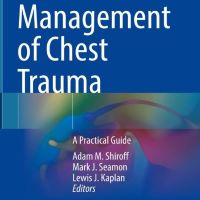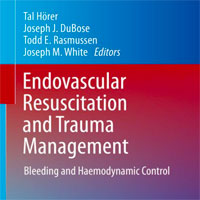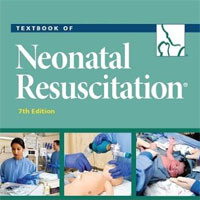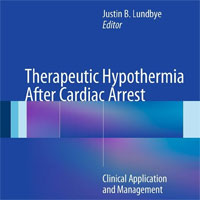Tag: resuscitation
Causes of Death in Patients Undergoing ECPR
Refractory shock was the leading cause of death among our cohort of extracorporeal cardiopulmonary resuscitation (ECPR) patients, followed closely by neurological complications, while other causes are rare. In this post-hoc... read more
Management of Chest Trauma: A Practical Guide
75% of patients who die from trauma have injuries to the chest. The care of the chest trauma patient can be incredibly complex, require multiple specialty and sub-specialty services, and may require interventions available... read more

Levosimendan Role in ECMO for Refractory Cardiac Arrest
Levosimendan use in extracorporeal cardiopulmonary resuscitation (ECPR) did not improve survival. Neurological outcome could be representative of the short- and long-term outcomes. Future well-designed randomized trials... read more
Fever Management with or without a Temperature Control Device After OHCA and Resuscitation
the TEMP‐CARE trial will advance our understanding of post‐cardiac arrest care fever management strategies. With a large sample size and a broad patient population, the results of this trial will inform clinical practice... read more
Cardiac Intensive Care
Using a multidisciplinary, team-oriented approach, this unique title expertly covers all the latest approaches to the assessment, diagnosis, and treatment of patients with critical cardiac illness. Led by Dr David L. Brown,... read more

Wireless Wearable Doppler Ultrasound: Monitoring Trauma Patients
This study demonstrated the feasibility of placing the wireless, wearable Doppler ultrasound on severely injured trauma patients admitted to the trauma bay of a busy level 1 trauma center. The device reliably captured... read more
Mortality in Patients with SA-AKI Using the MIMIC-III Database
In this study, we identified critical factors influencing mortality in patients with Sepsis-Induced Acute Kidney Injury (SA-AKI) using the MIMIC-III database. The primary findings of our research, including advanced age,... read more
Endovascular Resuscitation and Trauma Management
This book focuses on endovascular methods for resuscitation and trauma management. Written by highly qualified and clinically active physicians from around the world, it shares information gathered over the past decade,... read more

Management of Pediatric Septic Shock with Electrocardiometry
Advanced hemodynamic monitoring with EC, in conjunction with clinical assessment, facilitated a restrictive fluid strategy and reduced the incidence of FO. By closely monitoring hemodynamic parameters and tailoring therapy... read more
Septic Distributive Shock: Resuscitative Endovascular Balloon Occlusion of the Aorta
Massive distributive shock can lead to total collapse of the cardiopulmonary system with a subsequent need for CPR. Partial REBOA may be a viable resuscitation adjunct in such cases to restore hemodynamics and increase coronary... read more
Trauma Team Dynamics: A Trauma Crisis Resource Management Manual
This is the first book exploring the unique dynamics created by a multidisciplinary trauma team and how crisis management strategies can improve teamwork and communication and, potentially, improve patient resuscitation... read more

Prognostic Accuracy of POCUS in Patients with Pulseless Electrical Activity
This systematic review and meta-analysis shows that among 1,202 patients across 18 studies, point-of-care ultrasound (POCUS) exhibits high prognostic accuracy for survival to admission (SHA) and moderate accuracy for ROSC... read more
The PICU Handbook
The PICU Handbook is a unique, portable compilation of the information essential for residents and fellows to successfully navigate the modern Level 1 and Level 2 pediatric intensive care unit (PICU). Enhanced by numerous... read more

Textbook of Neonatal Resuscitation
Powerful resource for interactive, simulation-based teaching and learning! The Neonatal Resuscitation Program (NRP) is an educational program jointly sponsored by the American Academy of Pediatrics (AAP) and the American... read more

Cumulative Fluid Balance During the First Three ICU Days in Septic Patients with Heart Failure
In septic patients with HFpEF, positive fluid balance of CFB-day1 might improve the prognosis of patients. However, from the second day, fluid overload was associated with poor prognosis. Therefore, we propose that on... read more
Multi-dimensional Outcomes Following ECPR
Recent trials suggested that extracorporeal cardio-pulmonary resuscitation (ECPR) with veno-arterial extracorporeal membrane oxygenation (VA-ECMO) or "ECMELLA" (VA-ECMO plus Impella) may improve short-term survival and neurological... read more
Therapeutic Hypothermia After Cardiac Arrest
Therapeutic hypothermia has emerged as a very important treatment option for patients with cardiac arrest as it provides significant protection from developing neurologic injury once the patient has been successfully resuscitated.... read more

Favorable Outcomes When Using Prolonged CPR Combined with ECPR
Extracorporeal CPR (ECPR) combined with continuous renal replacement therapy (CRRT) successfully rescues a patient who experienced sudden cardiac arrest for 152 minutes. ECPR is an effective and advanced form of extracorporeal... read more
Handbook of Intravenous Fluids
This easy to use pocket book covers all aspects of intravenous fluid therapy in critically ill patients from applied physiology to bedside clinical management succinctly. It includes updated and evidence-based content on... read more

Impact of Time to Catheter-Based Therapy on Outcomes in Acute Pulmonary Embolism
Early catheter-based therapie (CBT) was associated with improved clinical outcomes in patients with acute intermediate-risk pulmonary embolism (PE). The composite PE shock score may help identify patients who will benefit... read more
Rediscovery of Acute Lung Injury in Cardiac Arrest
Systemic multi-organ injury following resuscitation from sudden cardiac arrest (CA) has long been recognized. First termed 'post-resuscitation disease' in the 1980's this systemic injury was more appropriately re-named post-CA... read more
7-day Fluid Balance Associated with Poor Outcomes
The net fluid balance in patients with sepsis 7 days following ICU administration was significantly related to mortality during hospitalization. Specifically, a 7-day fluid balance > 5,240 mL was associated with poor... read more








